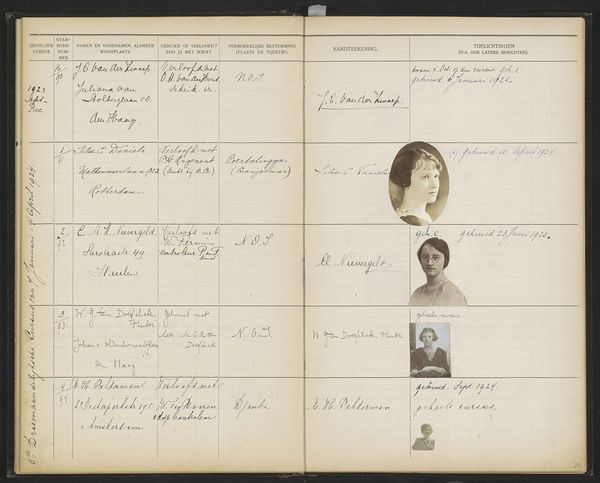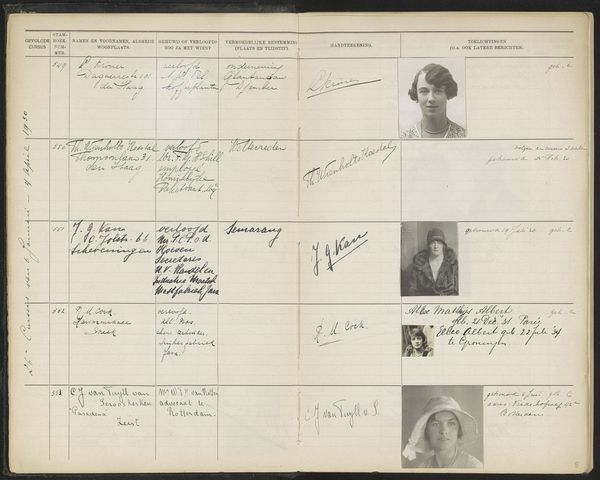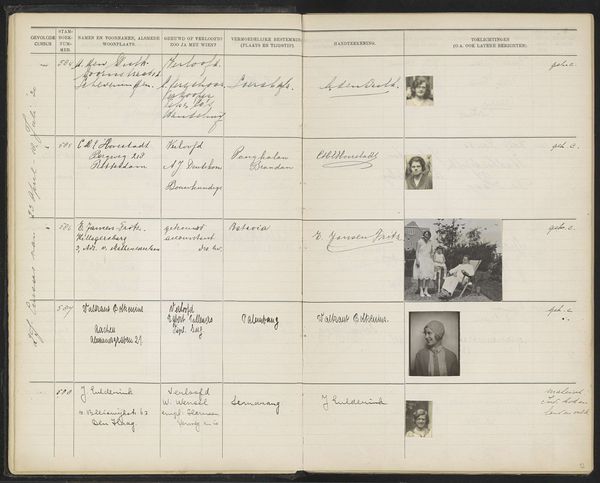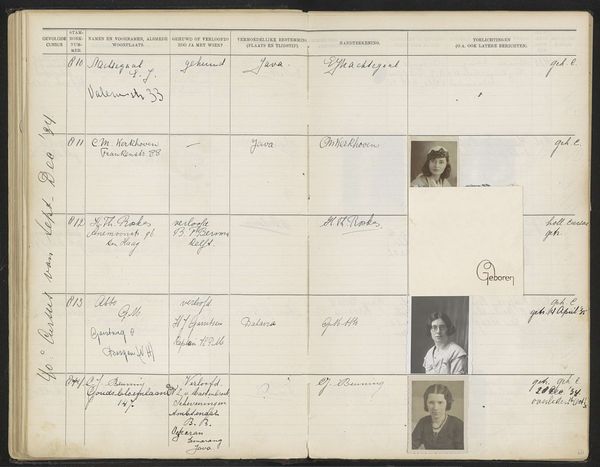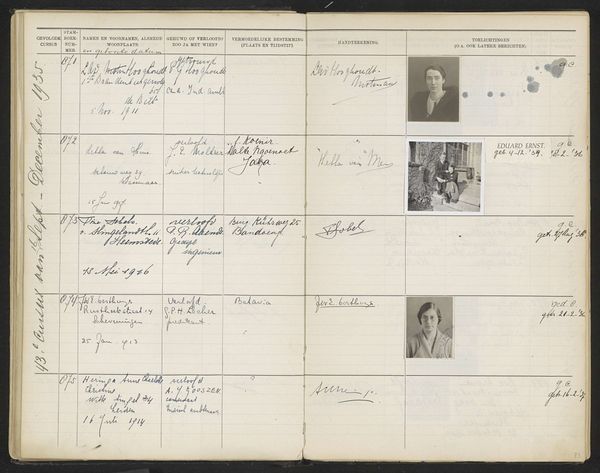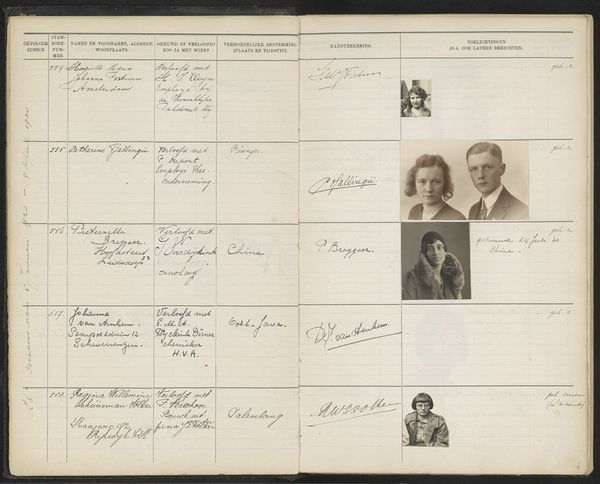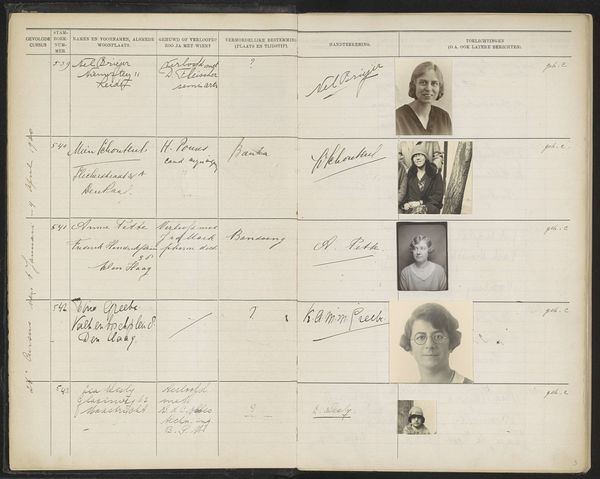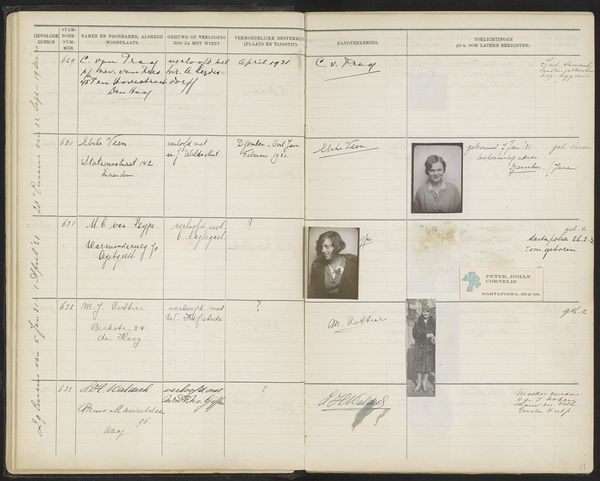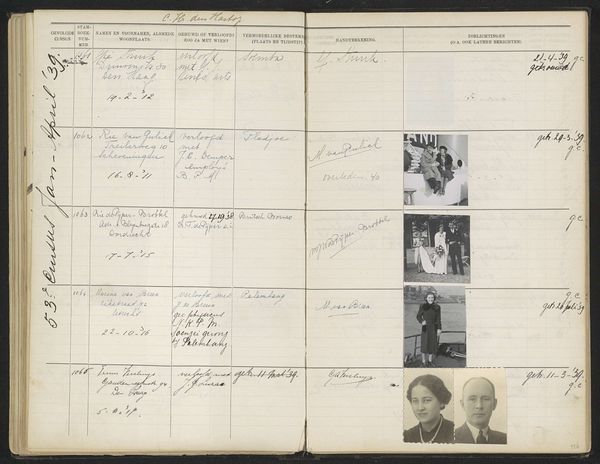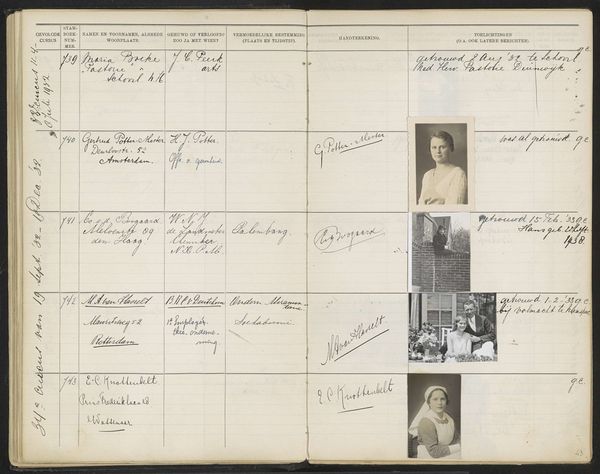
Blad 16 uit Stamboek van de leerlingen der Koloniale School voor Meisjes en Vrouwen te 's-Gravenhage deel II (1930-1949) Possibly 1930 - 1939
0:00
0:00
print, paper, photography
#
portrait
# print
#
paper
#
photography
#
academic-art
Dimensions: height 337 mm, width 435 mm
Copyright: Rijks Museum: Open Domain
Curator: Here we have “Blad 16 uit Stamboek van de leerlingen der Koloniale School voor Meisjes en Vrouwen te 's-Gravenhage deel II (1930-1949)”, which roughly translates to “Page 16 from the Register of Students of the Colonial School for Girls and Women in The Hague, part II (1930-1949)”. It’s possibly from between 1930 and 1939, and is composed of prints on paper including photographic images. Editor: The composition feels bureaucratic but simultaneously intimate. It's a registry, and the photographs introduce individuality into an otherwise rigid format. The starkness of the photographs creates a ghostly atmosphere. Curator: That’s interesting. To me, this isn't just a record but also a visual representation of a specific type of colonial endeavor: education and socialization, targeting women with colonial administration objectives in mind. Consider the semiotics of the portraits. They become symbolic markers of each young woman's place within a broader system. Editor: Precisely. And the means of production – photography and print – made this kind of widespread tracking possible. The uniform size of the photos speaks to standardization of the administrative process, yet the variety in the women’s attire is subtle, but present, and a testament to small forms of self-expression and personal negotiation in the face of what appears as absolute bureaucratic processing. It’s also fascinating how the register transforms human subjects into objects within the colonial machinery, documented and categorized, as tools to exert control. Curator: I think that you are spot on, considering that this kind of catalog serves a specific function. The signatures below each portrait may suggest accountability or agreement within the colonial power structures. And don't you think there is almost a psychological study within these portraits – expectations, ambitions… hopes for the colonial project embodied in these young women? Editor: Absolutely. They become powerful visual shorthands for entire ideologies about race, class, and gender during the Dutch colonial period. You make a compelling point about psychological tension contained in this document. The production here highlights the fraught relationships between colonizer and colonized. Curator: Considering the history imbued into its creation, this leaf provides a glimpse into both the structural nature of empire-building and the individual participation that legitimized colonial operations. Editor: Ultimately it underscores that no form, even administrative documentation, is neutral, especially when it directly implicates colonial expansion and violence.
Comments
No comments
Be the first to comment and join the conversation on the ultimate creative platform.
